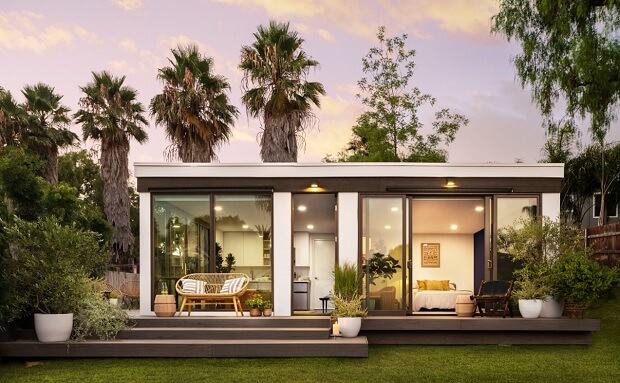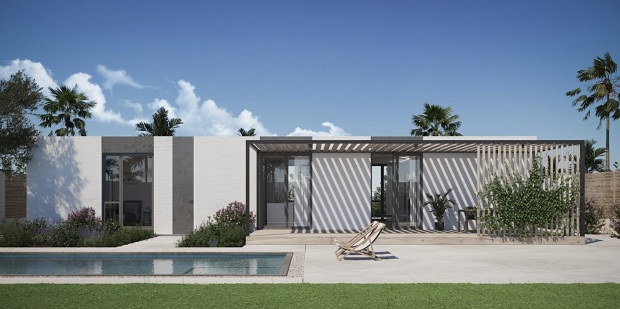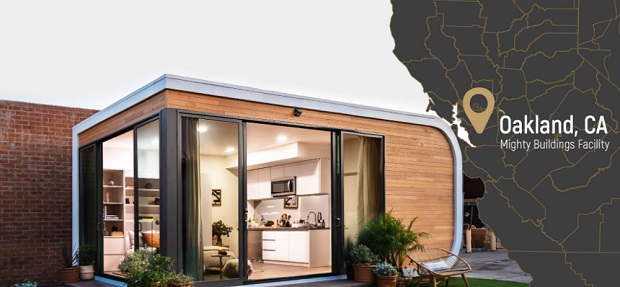Below is our recent interview with Sam Ruben, CSO & CO-Founder of Mighty Buildings:

Q: Mighty Buildings was founded in 2017, could you tell us your story?
A: After we had the idea for the company and officially incorporated it in 2017, we knew that we needed to spend a good amount of time on R&D work, and that’s been our primary focus for the last three years. Up until this point, most other companies working with 3D printing for construction have done projects through one-off permitting processes, which allows them to move quickly in the short-term but isn’t really scalable at a commercial level. Because we knew that our long-term vision for Mighty Buildings is to enable production-as-a-service, and have factories all over the world that builders/developers can use, we decided to invest time and resources in helping create industry standards and certifications for our materials and technology. Once we had made significant progress against our certification roadmap, we felt ready to launch from stealth knowing that we could quickly scale up to the commercial level we originally envisioned for the business. Before we launched, we had already delivered two units to customers and met key certification requirements for those builds, but our end goal is not to just produce our own units for customers—we want to be a production platform for industry to allow the existing labor force to build more, and we waited to launch until we felt confident that we were well-positioned to achieve that goal.
Every startup starts in a garage. Slightly over three years ago, four people – Slava Solonoitsyn, Dmitry Starodubtsev, Alexey Dubov, and Sam Ruben came together to start a 3D printing technology company called Mighty Buildings. They wanted to leverage technology to disrupt the construction industry by creating beautiful, affordable, and sustainable homes using 3D printing and robotics. Their garage was 7,900 sq ft in a shared warehouse in Redwood City, CA but they have since grown into a 10X larger space, a 79,000 sq ft production facility in Oakland, CA.
 Recommended: Meet BigChange – Leading Mobile Workforce Management Technology Company For The Service And Transport Sectors
Recommended: Meet BigChange – Leading Mobile Workforce Management Technology Company For The Service And Transport Sectors
Q: What are the key benefits of your 3D printing technology?
A: We developed a proprietary material that’s somewhat similar to Corian by Dupont, in the sense that it is stone-like but more lightweight. What’s unique about it is that the UV-curing process allows it to harden almost immediately while still maintaining cohesion with the underlying layers. This enables us to essentially “freeze” the material midair, which means we can print things like ceilings or overhangs without underlying support. The material can also be post-processed with robotic arms, unlike concrete, which means we can do things like milling or applying finishes via automation. Ultimately, our goal is to print the full shell of a house and then use robotic arms to pour insulation and apply finishes—this will automate about 80% of the construction process, and the remainder (installing fixtures and appliances) will be done by humans. In terms of the printing technique itself, it’s fairly straightforward extrusion; the key is the curing process and the properties of the material that enable it to be load-bearing without steel reinforcement and to be post-processed robotically.
Q: What’s the best thing about Mighty Buildings that people might not know about?
A: -Mighty Buildings obtained the first UL certification for a 3D printed building component, the first UL Evaluation Report of a 3D printed wall construction, and is the first company/product certified under the new UL 3401 standard for 3D printing in construction.
-Mighty Buildings is the first company to receive approval under California’s Factory Built Housing program for a residential unit incorporating 3D printing
-Mighty Buildings 3D printers use a thermoset composite called Light Stone Material (LSM) that hardens when exposed to UV light, making it a more effective building material than concrete.
-We invented our own material and our material technology is unique and advanced compared to most of the scientific fields of material development
-Sustainability is the main focus in our engineering, design, and material selection. Mighty Buildings’ is moving towards a low-carbon and sustainable future. We are committed to get to Net-Zero by 2028 – that’s 22 years ahead of the construction industry.

Q: You’ve recently raised $40 Million in Series B funding; can you tell us something more?
A: “Since our launch last year, we’ve seen massive demand and more than a tenfold increase in bookings for our accessory dwelling units (ADUs) product line, with B2B contracts secured for our single family housing (SFH) product line with forward-thinking developers,” said Slava Solonitsyn, CEO and Co-Founder at Mighty Buildings. “Despite launching in the midst of a pandemic, we are racing to fulfill the demand and orders for 2021 at our Mighty Factory in Oakland, California.”
With this new round of funding, Mighty Buildings plans to accelerate growth and expand their team. The company will continue to scale their production capacity with increased automation, and build out their B2B platform for developers with sustainability as a core focus, to meet the demand from forward-looking developers. Ultimately, the company’s vision is to provide production-as-a-service, with builders and architects designing their own structures and then developers using Mighty Factories to produce them at scale.
 Recommended: How Gaming Has Evolved For A New Generation Of Gamers
Recommended: How Gaming Has Evolved For A New Generation Of Gamers
Q: What are your plans and goals for the future?
A: Aside from our ADUs and SFH product line, we introduced our Mighty Kit System (MKS) this year. Ultimately, the company’s vision is to provide production-as-a-service, with builders and architects designing their own structures and then using Mighty Factories to produce them.

